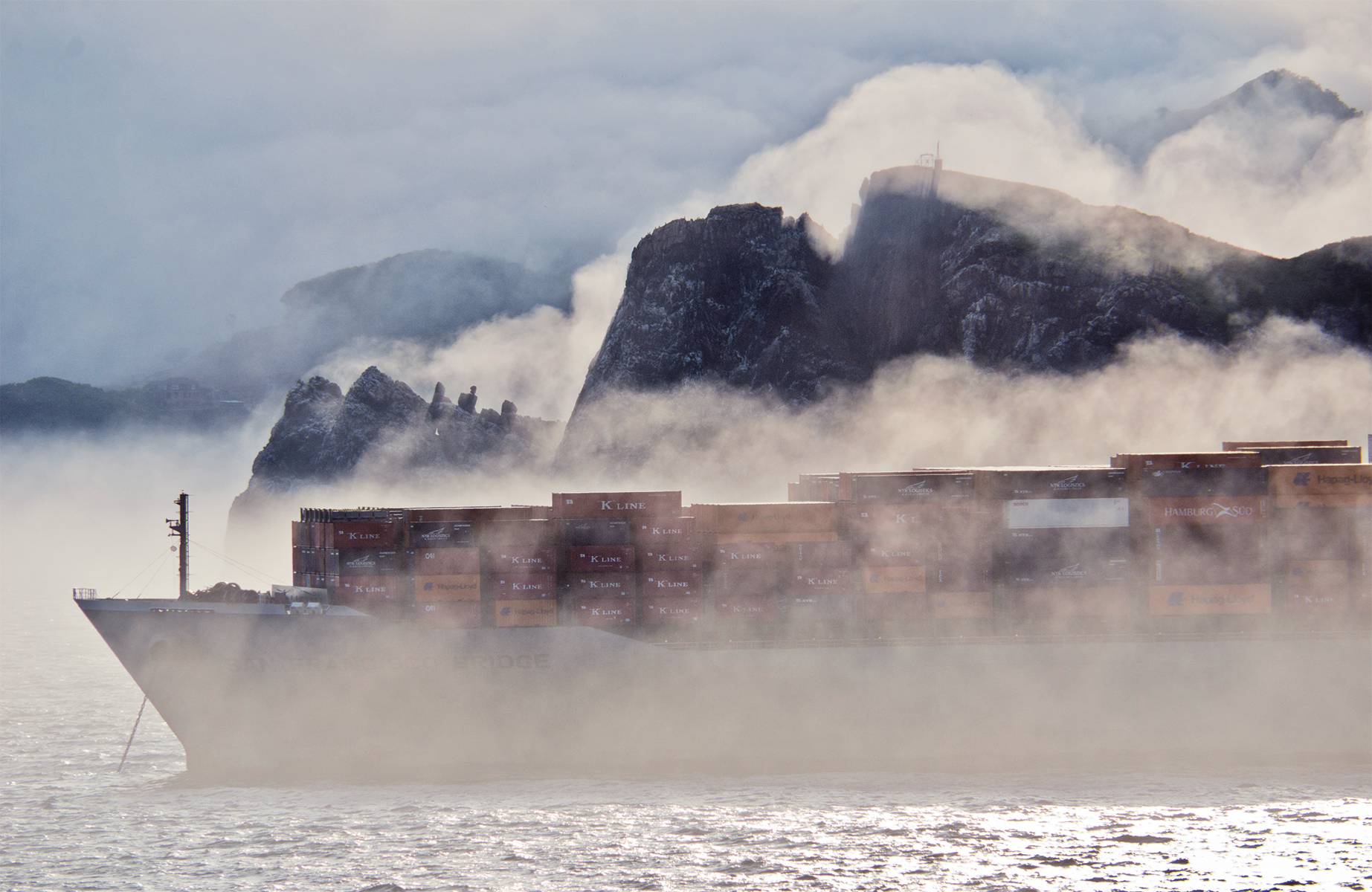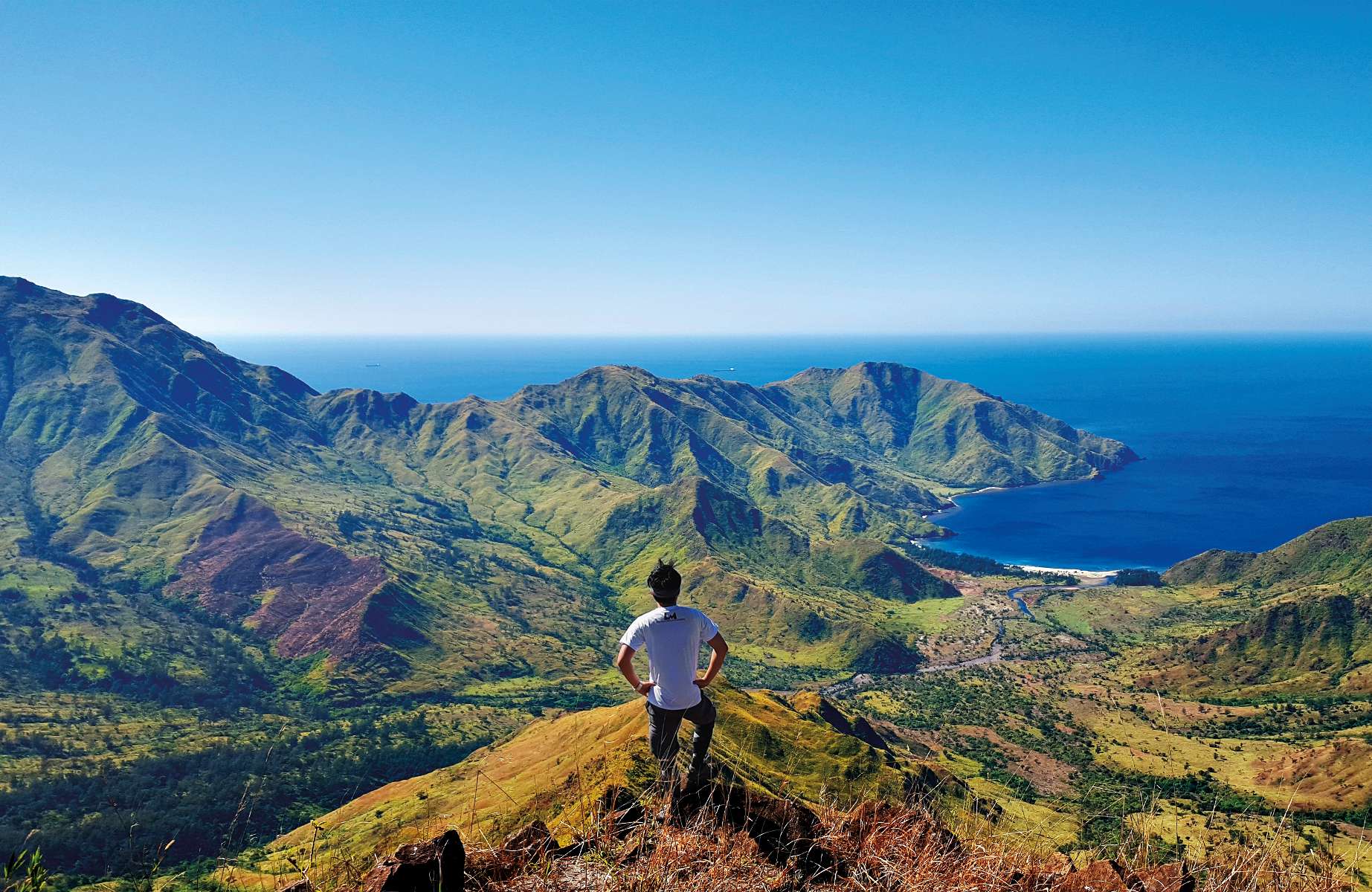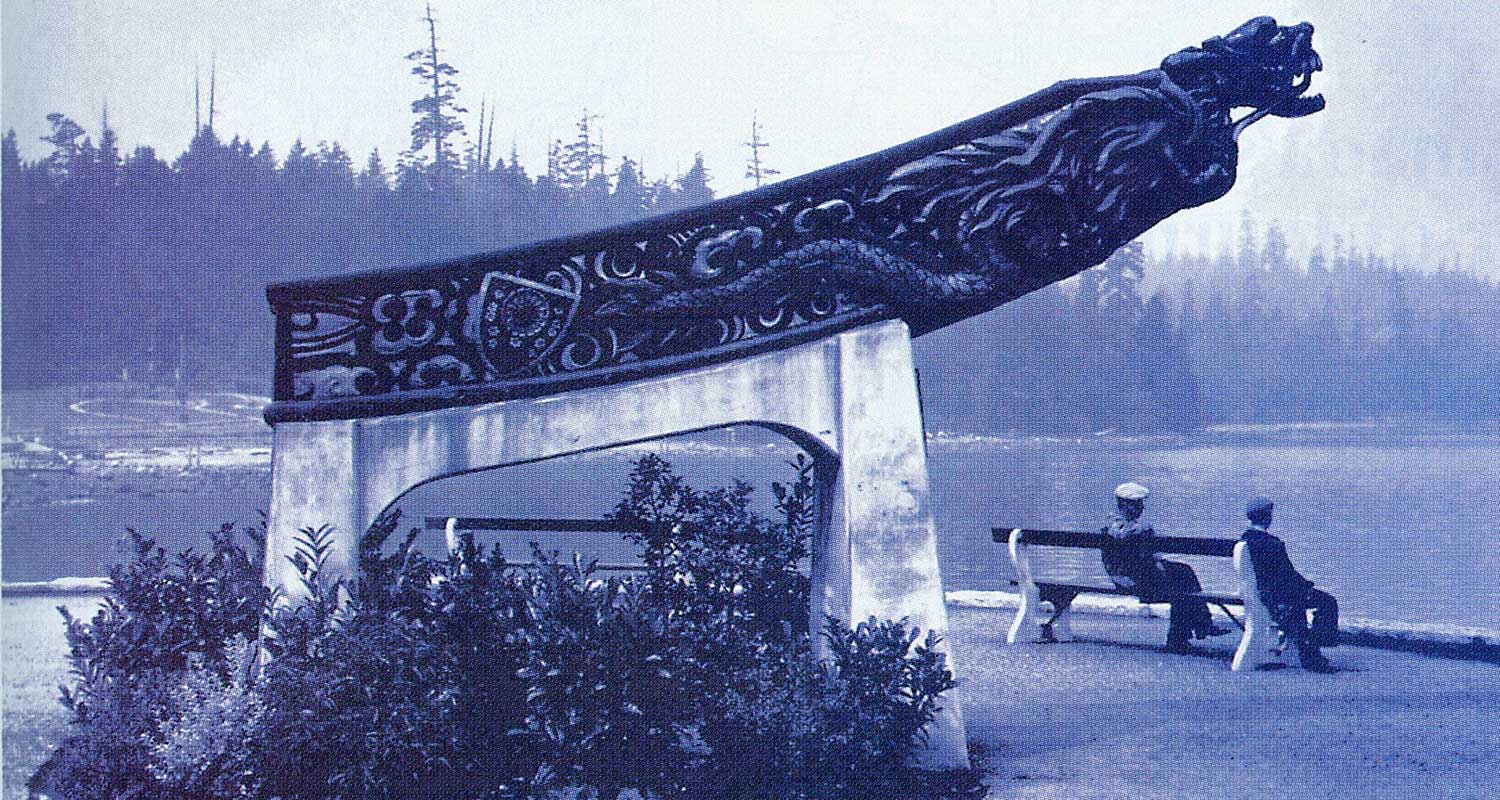Travelling at a steady 22 knots (40.7 kilometres per hour), the bow of a massive container ship cuts across the flat surface of the ocean. A load of blue, mustard, red, and grey metal containers are stacked and balanced along the length of the ship that is equivalent to three soccer fields. On deck, the rare passenger can be found contemplating the ocean stretching in front of them.
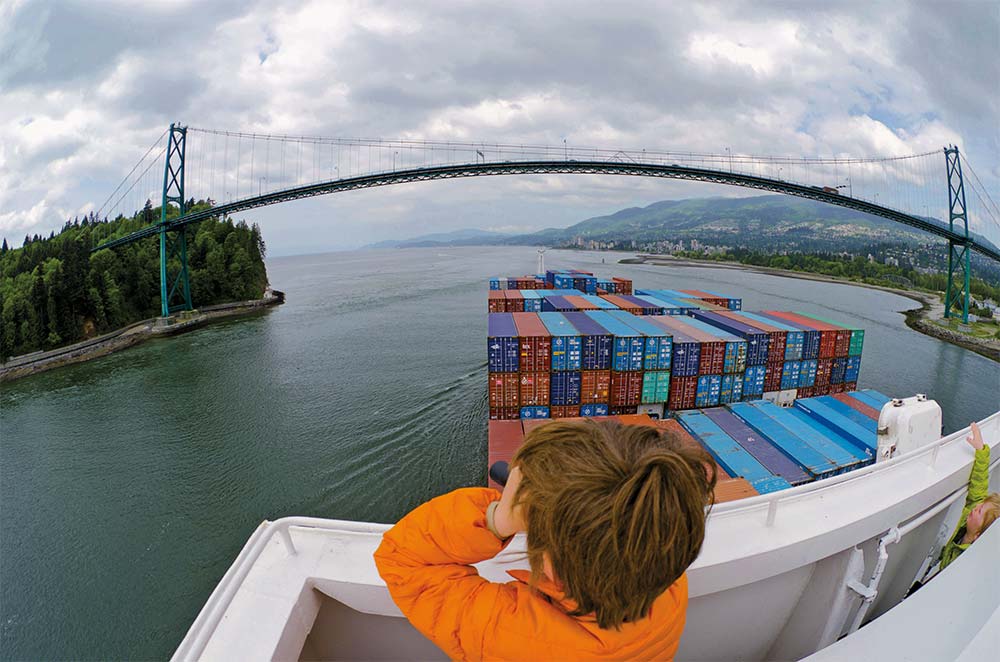
Although an uncommon form of transportation, travellers do embark on cargo ships and container ships for an experience that is far different from a conventional cruise. Every year, 3,000 to 4,000 people travel by freighter, compared to 23 million people who travel by cruise ship, says Kevin Griffin. Griffin is the owner of The Cruise People Ltd., a travel agency based in London, United Kingdom. Griffin explains that passenger transportation isn’t a priority for the multibillion-dollar cargo ship industry; it only represents a sub-activity.
Vancouver, BC, resident Shelby Tay first heard of cargo ship travel from friends of friends. In 2016, Tay planned a trip. Hoping to avoid airplanes, she began to explore travel by cargo ship. However, she quickly realized there is little information available online on this form of travel. In fact, fewer than a dozen travel agencies in the world specialize in freighter travel. Some shipping companies, such as CMA CGM based out of France, have their own booking agency, but only offer their shipping routes as destinations. This can be quite limiting compared to booking through an agent who, according to Griffin, can present up to 300 routes to their customers.
Is freighter travel better for the environment? In an article for The Telegraph in January 2008, Charles Starmer-Smith looked at Carnival cruise company and their carbon emissions, and found that, “401g of CO2 is emitted per passenger per kilometre, even when the boat is entirely full. This is … more than three times that of someone travelling on a standard Boeing 747 or a passenger ferry.” While the global shipping industry’s emission levels are quite high, the passenger’s carbon footprint on cargo ships is close to zero as travellers only represent a minuscule portion of the load, and unlike the cruise industry, the freighters would carry on their activities without passengers on board.
For the past 10 years, Hamish Jamieson, co-owner of the New Zealand-based agency Freighter Travel, has seen an increasing number of travel inquiries from people who are concerned about the environment. Jamieson says he receives up to two or three requests per day for information from environmentalists he terms “greenies.” He breaks down the freighter travel market into three categories: first, the people who can’t travel by plane because they are either afraid of planes or they have health issues that prevent them from flying; second, the people who love the sea and have nostalgia of sea travels; and third, the “greenies.” However, Jamieson says often, “When they find out that the cost of a freighter voyage is three, maybe four times the price of an airline ticket, they stop being green.”
Bruce Kirkby is a well-known Canadian wilderness writer, an award-winning adventure photographer, and former host of CBC’s No Opportunity Wasted. Kirkby, who lives in Kimberley, BC, considers freighter travel worth the expense. Kirkby set off in 2014 with his wife and their two young children, along with a small TV film crew. The trip was part of Travel Channel’s Big Crazy Family Adventure, for which Kirkby is a producer. The crew filmed the family’s adventures on their voyage from the family’s home in Kimberley to the Indian Himalayas. The family boarded a container ship to cover the leg from Vancouver, Canada to Busan, South Korea. Kirkby says that for the cost of a stay in a medium-priced hotel, they got to cross an ocean. Cargo ship travel rates are determined by day, and on a 16-day trip, Kirkby paid less than $6,000 for his whole family.
To justify the expense of her three-week trip, Tay compared it to a three-week vacation in Europe, and concluded she would rather pick the freighter adventure. “For me, it was really, really, special,” she says. She broke the price down into “the travel part of it, the food and accommodation part of it, and then just the space it created and the magic of being on the water.”
Cruise Versus Cargo
The daily ticket cost of cruise ships and cargo ships can be similar, but there are more amenities on cruise ships. On the surface, a cruise ship might seem like a better deal, but as Jamieson points out, on-board spending should not be underestimated. “Once they’re on board, the cruise will milk the passengers as much as they can,” he says. A glass of wine can cost up to $15 compared to $9 for a full bottle, or in some cases even complimentary, on a cargo ship. Cruises also offer expensive guided tours. It adds up. Jamieson recounts that on a 12-day cruise with his wife, he paid $6,000 compared to the $4,000 he paid for a 12-day cargo ship voyage. After the cruise, “We felt ripped off, we felt cheated,” Jamieson says.
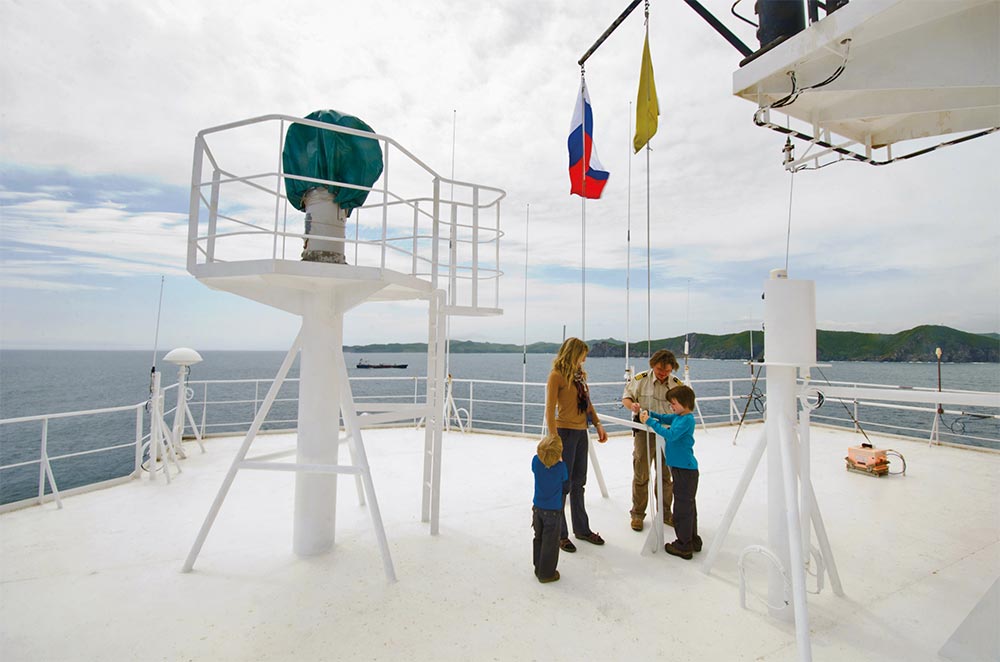
Jamieson and many other travellers prefer the freedom of the freighter. He enjoys the liberty to venture along the deck as he pleases without having to compete with 2,000 other passengers. Cargo ships can only take a maximum of 12 passengers without a doctor on board. Jamieson says that passengers can visit the bridge, interact with the crew and the captain, and even visit the engine room without having to pay an additional fee, unlike on a cruise ship.
Jamieson recalls giving a book to a passenger who expressed concern that he would get bored on the ship. After the trip, Jamieson asked the passenger what he thought of the book, but the passenger responded he had been too busy to read.
On board a cargo ship, three meals set the tempo for the day. Passengers can eat with the crew or the officers if they wish. Several travellers relate walking on deck for two or three hours a day. Depending on the weather, they would also spend time reading either inside their cabin or on deck with a view of the seemingly infinite ocean. A travel blogger (who prefers to be known by the Twitter handle @fprntsfotos) said over a phone interview that they have travelled on three different ships so far. The experience varied according to the number of other passengers on board, which ranged from zero to four. While it was nice to get to know their fellow travellers, they also appreciated the option to retreat to their cabin when needed, “It’s kind of ideal. You can have as much company or as little as you want.” On a freighter, people can detach themselves from their everyday life. Cargo ships don’t have Wi-Fi. “It’s a good way of contemplating your life, taking a bit of time off from the hustle and bustle of your normal life. It’s just unique for a lot of reasons,” @fprntsfotos says.
Kirkby and his family aimed to travel without flying, but they almost gave up for the Pacific leg of the trip, as children under five years old are usually not allowed on board for safety reasons. Passengers older than 79 years cannot travel by cargo ship, because cargo ships generally don’t have a doctor on board. For the same reason, travellers often need to provide an up-to-date medical certificate and immunization records before departure. Otherwise, the requirements to board a cargo ship are minimal: a passport and sometimes a visa, depending on country-specific requirements.
When travelling by freighter, passengers need to accept sudden changes of plan and remain flexible. The Kirkbys’ ship detoured to Russia on its way to South Korea because the shipping company wanted to take advantage of a sudden drop in fuel prices there. Because his family didn’t have visas for Russia, they had to go through an impromptu immigration process. With this diversion, the arrival at their destination was delayed by two days. “This experience underlines that it is still an adventurous way of travelling, not as certain as a plane,” says Kirkby. The exact date of departure can also fluctuate a day or two.
Even though cargo ships cover a wide range of routes, travel agent Jamieson says that some destinations do not get serviced by shipping companies. Destinations including India, Vietnam, and Indonesia have a long history of corrupt custom authorities; Jamieson explains that they tend to demand bribes for on-board passengers. Looking after passengers does not constitute a core activity, so shipping companies would rather limit the routes available to passengers than find a solution, Jamieson says. Other risks at sea may include piracy, but travel agent Griffin maintains that pirates are far less likely to target cargo ships because the ships are fast, tall, and large.
In his 20-year career in the cargo ship travel business, Jamieson has had roughly 100 customers a year, and only two did not like the experience. “A lot of people get hooked,” he says, “A great proportion of my passengers are repeat passengers.”
Some travellers don’t want to get off at the end of their trip, others book a new trip as soon as they are back on land. Is it the fresh air on deck, or the gentle sway of the ship against the waves, or the sunsets that stretch along an infinite horizon? Could it be the flying fish, the dolphins, and the whales that keep people coming back? Whatever the pull may be, it seems that life at sea and the peaceful pace on board a cargo ship have hypnotic powers.





